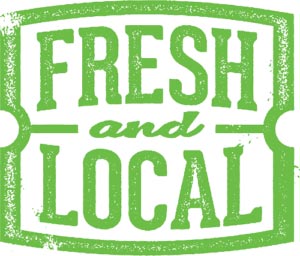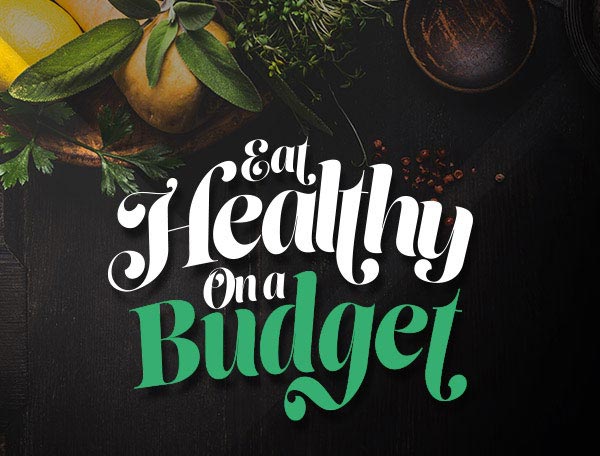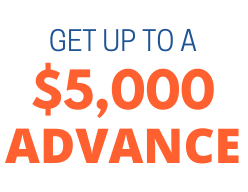We’re guilty as charged! We buy food simply because it’s “there.” Some companies do an amazing job at marketing their food products. And YES, it can be hard to resist the call of super low prices on delicious flame-broiled burgers. But doing this kind of thing too much can affect our waistlines and our pocketbooks in negative ways.
The truth is, overindulging may be the culprit for some people. But for others, eating healthy on a budget may be a result of other reasons that are entirely out of their control.
What if there aren’t many supermarkets in the neighborhood where they live? Or maybe, there are plenty of “boutique” supermarkets around, but the foods are pricey because they’re “trendy.”
There could be many roadblocks to keeping you from eating healthy on a budget. Even if you have a structured settlement, an annuity, or lottery winnings, and you sell your future payments for a lump sum of cash right now, you’ll still need budgeting savviness to make the right choices, as it relates to food. Simply stated, budgeting for grub and keeping a healthy diet should be on everyone’s list of priorities.
To make things easy, we’ve compiled a list of things you can do to put yourself on the path to healthy eating without breaking the bank.
(Be sure to check out our other recommendations to make money, save money, and live your best life).

Cook Large Meals
You’ve already made a big pot of stew…or maybe it’s a healthy lasagna. So why not enjoy your culinary creation for a second or even a third time throughout the week? Cooking large meals means that you can stretch your meals and save a buck.
Putting in the work up front can limit the temptation to buy take-out, spending your hard-earned cash unnecessarily. Not a fan of repeating your meals in the same week? Freeze your leftovers and surprise! You’ve got a heat-and-eat meal ready to go for the next few weeks or so. Keep in mind that when stored properly in your freezer, vegetables can last up to 6 months!
Avoid “Convenient” Food, Curb Your Cravings
You’ve got your block of cheese. You got your shredded. Maybe a whole watermelon is in the cards, but there are watermelon chunks available, neatly chopped and beckoning you to buy them. No doubt, it’s certainly a time saver to go for the shredded cheese or the already-cut watermelon chunks. But truth-be-told, you’re going to pay extra for the convenience. You can save a considerable amount of money by opting for groceries which aren’t so “convenient.” In other words, you may need to spend an extra five minutes doing some food prep. Chopping up your own veggies and shredding your own cheese can help you stretch your dollars further.
On that note, many companies will feature “to-go” packs of processed snacks. Again, you’d be paying a premium for the convenience – all that extra packaging that goes to individually wrapping food products is what you’re really paying for. Instead, purchase a cheap pack of sandwich bags, buy your snacks “whole,” and divvy up portions yourself. And say no to chips, cookies, and other unhealthy options. You’ll enjoy the cost savings immediately.
In terms of nutrition, be sure to read food labels. Look for foods that have no more than 600 milligrams of sodium and 12 grams of sugar per serving.
Prevail Against the Food Desert
This is a tough one. A food desert is an area where most residents don’t have access to healthy foods. Grocery retailers may not have set up shop close by. And transportation to get to a grocery store in a neighboring town may not exist or may be sporadic, at best. Although living in a food desert isn’t ideal, there are ways individuals can fight back to ensure their nutritional needs are met at a cost they can afford.
 First up, grow your own food
First up, grow your own food
It’s not a lofty goal. Starting a garden (even if it’s on your terrace or on a window sill), ensures that your food is non-GMO and fresh. Herbs, veggies, nuts, and even fruit can be literally within your reach and the cost of the seeds is minimal. To speed things up, you can buy a plant with fruits that have already begun to sprout.
Having fruit, nuts, and vegetables at the ready is a great way to access healthy food in an area where it’s scarce. Growing a variety of goods will ensure you have the nutrients you and your family need – and you’ll have to rely less on the grocery store. And this is another opportunity where you can freeze any excess. Your food will maintain its nutritional value for months.
Exercising your green thumb in a food desert is sustainable and affordable. Sun, water…they’re all you need.
Utilize ride-sharing
Hitching a ride with someone might prove as a good alternative to public transportation when you need to go food shopping. Ride-sharing services like Uber and Lyft provide relatively inexpensive rides to wherever you need to go, provided there are drivers working in your area. If funds are limited, try it the old-fashioned way, and hitch a ride with a friend or family member.
Leverage New Resources
Food deserts have become a hot issue across the country. That’s why as of March 2018, 3.9 million pounds of produce have been donated to food pantries and shelters. Locally, community gardens and fresh food trucks are helping improve access to fresh foods across the country. If you have access to the internet, see what your local community is doing to help residents in food deserts. Fresh vegetables, meats, and other goods may be just a food-truck-away. Knowing these resources exist is half the battle.

Try Bargain Stores, Look for Sales
So, it takes a certain determination to be an ‘Extreme Couponer.’ Spending hours compiling, and calculating is great! But if time constraints are an issue, you can shop the products which are on sale – typically, grocery chains will offer a circular for the week detailing what’s been price-reduced.
Plus, there are always bargain stores like Family Dollar or Aldi you can check out, which offer quality products at bargain prices. A little bit of legwork might be all it takes to save upwards of $20, $30, or even $100. And when you do find deals, remember to stock up on items that you use and buy often.
Buy Cheaper Cuts of Meat
Most meat-eating people would totally go for a good steak. And lamb chops? You bet. In fact, there are lots of meat options out there which are drool-worthy, but expensive with a capital “E.” So instead of the porterhouse or filet mignon (which can run anywhere from $40-$60 for a 6-ounce cut), try buying cheaper cuts of meat. That goes for fish too. It’s about striking a balance for what is healthiest and what’s economical.
For anyone looking to stretch their dollar and eat healthier, we’ve found that there are plenty of things that can be done to be successful.
Whether or not you have a lump sum of cash in-hand, keeping more of it in your pocket is something that anyone can do, even when they set out to start eating right.
And there’s no time like the present to start.






